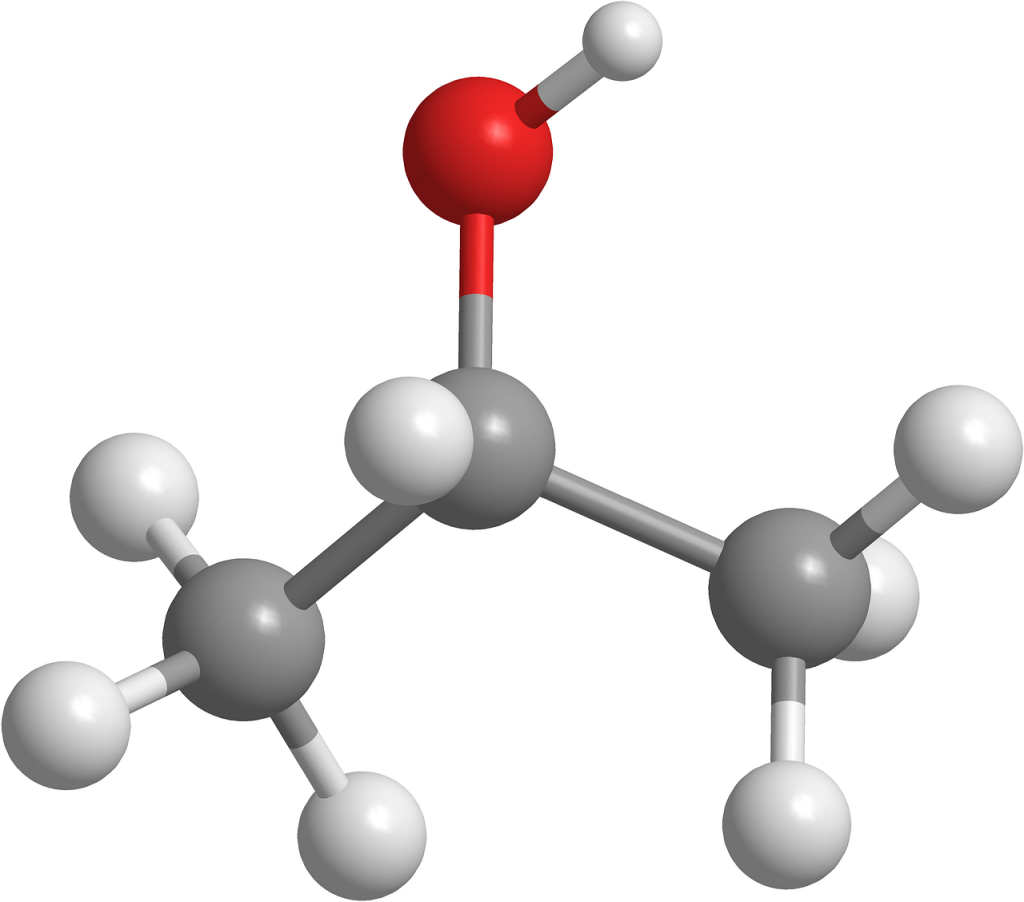
The keto diet is a high-fat, low-carb diet which continues to gain new followers every day. This unique approach to nutrition offers a variety of health benefits. Weight loss, better blood sugar management, and even improved cognitive function have all been reported by keto dieters. But if you are just starting out with keto, you may not know simple things – like which foods to eat, and which to avoid. Admittedly, the keto diet is a little different than how you are probably eating right now. But that’s exactly why it works. By eschewing carbohydrates, your body ramps into a super fat burning mode called nutritional ketosis. In this article we will provide an overview of the keto diet, why it works, what the benefits are to keto, and what foods you should eat regularly.
What Is the Keto Diet?
The keto diet — also referred to as the ketogenic diet — is a low-carbohydrate diet, where your body uses fat for fuel. By removing almost all carbohydrates, and inserting healthy fats in their place, your body enters an advanced fat-burning condition called nutritional ketosis. Once in ketosis, your body will start using fat for energy, rather than carbohydrates or glucose.
There are a number of ways to shift into nutritional ketosis. The most important priority is cutting down on carbs. The standard American diet suggests consuming between 200 and 300 grams of carbohydrates per day. By contrast, keto usually involves eating only 20 grams of carbohydrates throughout the day. This drastic shift can temporarily put you in a funk called the ‘keto flu’, but it’s important to remember that this is just temporary. While the keto diet is certainly high in healthy fats – cutting the carbs is actually the most critical step to getting (and staying in) ketosis. Before we dive into specifics, it’s important to understand exactly how our metabolism works.
How the Keto Diet Works
In a normal American diet, carbohydrates are consumed in abundance. Once eaten, carbs turned into glucose. Glucose can be thought of as the simplest form of sugar, and it is easy for the body to convert and use as your primary source of energy. Thus, glucose is your main source of fuel, at least when consuming the standard American diet. As a lot of carbs are consumed, your body has a rise in blood sugar, as these carbs are turned into glucose. Then, your body creates insulin, which is a hormone meant to transport glucose throughout your body. You may have heard the term ‘insulin spike’ – this is what that term is referring to.
As your body uses glucose, any extra is stored. This reserve of energy sounds good – until you realize it’s stored as body fat. If you keep eating carbohydrates, your body will continually use glucose as its fuel source. This may seem beneficial, but in reality, it means you can’t dip into your fat stores. This leaves you in a state of constantly storing excess energy, which leads to weight gain. Meanwhile, you are unable to dip into your stored body fat, so you can’t burn off any.
But luckily for those who follow the keto diet, the only way to truly start burning off those fat stores is by removing carbohydrates entirely. In turn, this diminishes your glucose stores (usually referred to as ‘glycogen’). At this point, your body essentially realizes it is running out of energy, so it starts dipping into its reserves of fat. And there you have it — how a keto approach burns off your stored body fat.
What Are Ketones?

During this metabolic shift, your body turns fatty acids into something called ‘ketones’. Your body essentially responds to a depletion of carbohydrates, by quite literally making a new form of fuel. These ketones are produced by your liver, and they are composed of fat (hence why the keto diet is usually referred to as a ‘fat burning’ approach). While ketone production is greatly increased during a ketogenic diet, the truth is that ketones are nearly always floating around your system.
The process of turning stored fat into energy, is known as beta-oxidation. There used to be confusion around ketosis, and a much different (and highly dangerous) process called ‘metabolic ketoacidosis’. But the truth is that nutritional ketosis and metabolic ketoacidosis have very little in common. During the process of nutritional ketosis, which is very safe, any excess ketones will be eliminated via your breath or urine. Interestingly, there is not just one type of ketone body but rather three. There’s acetone, BHB (beta-hydroxybutyric acid), and AcAc (acetoacetate). Of these, BHB is not technically a ketone, due to its structure. However, for our intents and purposes, BHB is included in nearly every discussion of ketogenic diets.
Both AcAc and BHB help to transport energy from your liver, to the other tissues inside your body. AcAc is the first ketone created, and from there, BHB is formed. Acetone is made as a byproduct of AcAc, but it plays the least important role in the metabolic process of ketosis. Acetone is also notable for being the main reason behind keto breath, which is that slightly fruity smell that sometimes accompanies a keto dieter’s outward breaths. Scientists are not entirely sure why we have the ketogenic process built in to our bodies, but they surmise that we have the metabolic machinery necessary for ketosis because our ancestors needed an alternative fuel, when food was scarce for long periods of time. This actually makes perfect sense, as otherwise we would have starved fairly quickly, and possessed no other way to produce energy. In fact, before agriculture, it’s estimated that most of the human diet was very low carb, as higher carbohydrate foods were largely unavailable.
The Differences Between Keto, Atkins, and Low Carb
Many casual dieters assume keto, Atkins, and low carb are all the same thing. While related, there are actually subtle differences between the three different approaches. If you are following a keto diet, you are under the umbrella of a low carb diet as well. However, it does not work the same way with the other two approaches.
Differences in Net Carb Amounts
The biggest difference between keto and low carb is the amount of carbohydrates that can actually be consumed. Since the US dietary recommendation for carbs is 200-300 grams per day, anything around 150 grams or less would be considered low carb. Keto is much stricter, with carb levels needing to usually be around 20 grams per day (though some stay in ketosis at around 50 grams). Atkins is slightly different than both of these approaches, as it has different phases included. One day you might be in ketosis, the next you may be eating 100 grams of carbs. Another way to think of it is to imagine three levels of a sports fan. One is a bandwagon fan who sometimes shows up. One is slightly more regular, but still a little bit of a casual fan. And one is the biggest fan you know – a true hardcore supporter of the team, always there at every game. Keto is the most intense fan. Your ketone levels stay high all the time, and your carb intake always stays low. There are no days off, when following a strict keto diet.
Differences in Protein Consumption
On a normal American diet, protein is often lacking. With lots of bread, cereal, pastries, grains, chips, and pizza – there isn’t a lot of room left for protein. However, healthier dietary approaches generally emphasize protein. This is true of most low carbohydrate diets. Keto differs in this regard, as too much protein may kick the dieter out of ketosis. Instead, ketogenic diets focus on moderate protein intake, along with large amounts of healthy fats, and a tiny amount of carbohydrates.
Differences in Health Goals
While they may seem identical from the outside, Atkins dieters and low carb dieters may have entirely different goals than the average keto dieter. You can think of keto as a slightly more ‘advanced’ approach, as the goal of ketogenic diets is to get into nutritional ketosis and stay there. Atkins and low carb don’t always share this goal and are generally more focused on other health conquests. The reason for this difference is that weaning yourself off of glucose for good, offers a much wider array of long term health benefits. In fact, it can sometimes be detrimental to your metabolism to be dipping in and out of ketosis, too often.
Ketogenic Diet Macronutrients
When you consume food, there are only three macronutrients to choose from. There are fats, proteins, and carbohydrates. In a standard American diet, the average ratio breaks down as something like 1:3:6 (fat, protein, and carbs). However, the keto diet spins this on its head, as it is more like 6:3:1. With this drastic shift in macronutrients, you are looking at an entirely different dinner plate than you may be used to.
However, contrary to popular opinion, there is not one magic ratio of macronutrients for keto. You should calculate your own individual macros, using a free macronutrient calculator. This calculator will take into account your activity level, your physical goals, and your health history (including any medications you may be on). This being said, the general macros for keto will usually break down somewhere along the lines of:
- 70-80% of calories from fat
- 20-25% of calories from protein
- 5-10% of calories from net carbs
The Different Types of Keto Diets
There are multiple iterations of the keto diet, not just one. While the standard approach works for most, athletes at high levels (as well as biohackers) may want to experiment with the other approaches.
- Standard ketogenic diet (SKD): The most well-known keto approach, this is very low in carbs, high in fat, and moderate in protein. This diet stays the same, day to day. Typically, the macronutrient ratio is 75% fat, 5% carbs, and 20% protein.
- Cyclical ketogenic diet (CKD): Similar to the standard ketogenic diet but including refeeds with more carbohydrates. Typically, a ‘5 days on, 2 days off’ approach is used. You will be kicked out of ketosis on the higher-carb days, hence the ‘cyclical’ name.
- Targeted ketogenic diet (TKD): Very similar to the standard keto diet, but with more carbs added around your workout window. This is commonly used for high-level athletes that are competing in endurance sports.
- High-protein ketogenic diet: This approach is nearly identical to the standard ketogenic diet but adjusts the macronutrient ratio to allow for more protein. The adjusted ratio is usually 5% carbs, 60% fat, and 35% protein.
What Can You Eat on a Keto Diet?
Now that you know the science behind keto, the question becomes – what can I eat on the keto diet?
Meat, Eggs, Nuts, and Seeds

Always choose the highest quality meat you can afford, selecting grass-fed and organic beef whenever possible. Other great choices include wild-caught fish, pasture-raised poultry, pork, and eggs. Nuts and seeds are also fine, and are best eaten raw.
- Beef: steak, veal, roast, ground beef, and stews.
- Poultry: chicken breasts, quail, duck, turkey and wild game.
- Pork: pork loin, tenderloin, chops, ham, and sugar-free bacon.
- Fish: mackerel, tuna, salmon, trout, halibut, cod, catfish, and mahi-mahi.
- Bone Broth: beef bone broth and chicken bone broth.
- Shellfish: oysters, clams, crab, mussels, and lobster.
- Organ Meats: heart, liver, tongue, kidney, and offal.
- Eggs: deviled, fried, scrambled, and boiled.
- Nuts and Seeds: macadamia nuts, almonds, and nut butter.
- Lamb
- Goat
Low-Carb Vegetables
Vegetables are a great way to get a healthy dose of micronutrients, thus preventing nutrient deficiencies when consuming a keto diet daily.
- Leafy Greens: examples include kale, spinach, Swiss chard, and arugula.
- Cruciferous Vegetables: including cabbage, cauliflower, and zucchini.
- Lettuces: including iceberg, romaine, and butterhead.
- Fermented Vegetables: like sauerkraut and kimchi.
- Other Vegetables Low in Carbs: mushrooms, asparagus, broccoli, celery, etc.
Keto-Friendly Dairy
For dairy, choose the highest quality you can reasonably afford. Select grass-fed, whole-fat, and organic – whenever possible. Avoid low-fat or fat-free dairy products, as well as products with large amounts of sugar.
- Grass-Fed Butter and Ghee
- Heavy Cream and Heavy Whipping Cream
- Fermented Dairy Products (like yogurt and kefir)
- Sour Cream
- Hard and Soft Cheeses
Low-Sugar Fruits

Approach fruit with caution on keto, as it contains high amounts of sugar and carbohydrates. It is best to generally avoid, except for very small amounts of berries.
- Avocados (one of the only fruits you can indulge in excessively).
- Organic Berries: raspberries, blueberries, strawberries, and cranberries (a handful per day, max).
Healthy Fats and Oils
Healthy fat sources include grass-fed butter, tallow, ghee, coconut oil, olive oil, sustainable palm oil, and MCT oil. It is important to avoid low quality fats and oils.
- Butter and Ghee
- Lard
- Mayonnaise
- Coconut Oil
- Coconut Butter
- Flaxseed Oil
- Olive Oil
- Sesame Seed Oil
- MCT Oil
- MCT Powder
- Walnut Oil
- Olive Oil
- Avocado Oil
Foods to Avoid on a Keto Diet
It’s best to avoid any foods not listed above, when following a ketogenic diet. Generally this means: no grains of any kind, no high-sugar foods (including fruit), and fewer processed foods. These foods usually contain a large amount of sugar alcohols, which can actually knock you out of ketosis. Plus, it’s much easier to stay on the keto path if you just remove these foods from your pantry (and life) altogether.
The Best Way to Measure Your Ketones
While you can eat the right foods on keto, you will also want to accurately measure your ketone levels. Until now, there has not been a convenient and reliable way to check your ketones. That’s why we invented the first and only clinically backed ketone breath monitor. By simply breathing in our device, you will have a reliable measurement of your current ketone levels – in just seconds. No more urine strips, no more pricking your finger – just a fast, easy and reliable breath test. You can bring our device with you to the office, take it to the gym – you can truly check your ketones anywhere. Unlike previous devices, which were often poorly made, unreliable, and not backed by clinical research – our ketone breath monitor is patented. This means no other device is legally allowed to use our exclusive technology. Whether you are brand new to keto and want a convenient and reliable way to check your ketone levels, or you’re an elite level biohacker – Biosense is the perfect way to measure your ketones.
You don’t need to worry about continually buying strips, continually pricking your finger – we have all you need, in just one device. One of our favorite features is the personalized insights you get with the device. Every time you measure, your results are graphed and stored, so you can easily track your progress. Until now, there has not been an easy and convenient way to check your ketone levels – which has made many people give up on keto entirely. But that outcome is no longer necessary, as we’ve made a device that does all the work for you. Just simply take one outward breath into the device, and within seconds you’ll know your ketone level. Whether your goal is to burn fat, lose weight, or improve your blood sugar – we have the answer.
References:
Golay A, DeFronzo RA, Ferrannini E, et al. Oxidative and non-oxidative glucose metabolism in non-obese type 2 (non-insulin dependent) diabetic patients. Diabetologia. 1988;31:585–91.
Defronzo RA, Simonson D, Ferrannini E. Hepatic and peripheral insulin resistance: A common feature of type 2 (non-insulin-dependent) and type 1 (insulin-dependent) diabetes mellitus. Diabetologia. 1982;23:313–9.
Defronzo RA, Diebert D, Hendler R, Felig P. Insulin sensitivity and insulin binding in maturity onset diabetes. J Clin Invest. 1979;63:939–46.
Pilkington TR, Rosenoer VM, Gainsborough H, Carey M. Diet and weight-reduction in the obese. Lancet. 1960;i:856–8.
Howard BV, Wylie-Rosett J. Sugar and cardiovascular disease: A statement for healthcare professionals from the Committee on Nutrition of the Council on Nutrition, Physical Activity, and Metabolism of the American Heart Association. Circulation. 2002;106:523–7. Erratum in 2003;107:2166.
Franceschi S, Favero A, Decarli A, et al. Intake of macronutrients and risk of breast cancer. Lancet. 1996;347:1351–6.
Liu S, Manson JE, Stantpfer MJ, et al. Dietary glycemic load assessed by food-frequency questionnaire in relation to plasma high-density-lipoprotein cholesterol and fasting plasma triacylglycerols in postmenopausal women. Am J Clin. 2001;73:560–6.
Gaziano JM, Hennekens CH, O’Donnell CJ, Breslow JL, Buring JE. Fasting triglycerides, high-density lipoprotein and risk of myocardial infarction. Circulation. 1997;96:2520–5.
Kreitzman SN. Factors influencing body composition during very-low-caloric diets. Am J Clin Nutr. 1992;56(l Suppl):217S–23S.
Cullingford TE, Eagles DA, Sato H. The ketogenic diet upregulates expression of the gene encoding the key ketogenic enzyme mitochondrial 3-hydroxy-3-methylglutaryl-CoA synthase in rat brain. Epilepsy Res. 2002;49:99–107.
Prentice AM. Manipulation of dietary fat and energy density and subsequent effects on substrate flux and food intake. Am J Clin Nutr. 1998;67(3 Suppl):535S–41S.
Foster GD, Wyatt HR, Hill JO, et al. A randomized trial of a low-carbohydrate diet for obesity. N Engl J Med. 2003;348:2082–90.
He K, Merchant A, Rimm EB, et al. Dietary fat intake and risk of stroke in male US healthcare professionals: 14 year prospective cohort study. BMJ. 2003;327:777–82.
Westman EC, Mavropoulos J, Yancy WS, Volek JS. A review of low-carbohydrate ketogenic diets. Curr Atheroscler Rep. 2003;5:476–83.
Petersen KF, Befroy D, Dufour S, et al. Mitochondrial dysfunction in the elderly: Possible role in insulin resistance. Science. 2003;300:1140–2.
Foster-Powell K, Holt SH, Brand-Miller JC. International table of glycemic index and glycemic load values: 2002. Am J Clin Nutr. 2002;76:5–56.
Leeds AR. Glycemic index and heart disease. Am J Clin Nutr. 2002;76:286S–9S.
Liu S, Willett WC, Stampfer MJ, et al. A prospective study of dietary glycaemic load, carbohydrate intake, and risk of coronary heart disease in US women. Am J Clin Nutr. 2000;71:1455–61.
Sims EA, Danford E, Jr, Horton ES, Bray GA, Glennon JA, Salans LB. Endocrine and metabolic effects of experimental obesity in man. Recent Prog Horm Res. 1973;29:457–96.
Hollenbeck B, Y-Di Chen, Reaven GM. A comparison of the relative effects of obesity and non-insulin dependent diabetes mellitus on in vivo insulin-stimulated glucose utilization. Diabetes. 1984;33:622–6.
Kolterman OG, Gray RS, Griffin J, et al. Receptor and postreceptor defects contribute to the insulin resistance in noninsulin-dependent diabetes mellitus. J Clin Invest. 1981;68:957–69.
Gresl TA, Colman RJ, Roecker EB, et al. Dietary restriction and glucose regulation in aging rhesus monkeys: A follow-up report at 8.5 yr. Am J Physiol Endocrinol Metab. 2001;281:E757–65.
Hansen BC, Bodkin NL. Primary prevention of diabetes mellitus by prevention of obesity in monkeys. Diabetes. 1993;42:1809–14.
Coulston AM, Liu GC, Reaven GM. Plasma glucose, insulin and lipid responses to high-carbohydrate low-fat diets in normal humans. Metabolism. 1983;32:52–6.
Chen YDI, Swami S, Skowronski R, Coulston AM, Reaven GM. Effects of variations in dietary fat and carbohydrate intake on postprandial lipemia in patients with non-insulin dependent diabetes mellitus. J Clin Endocrinol Metab. 1993;76:347–51.
Mitchell GA, Kassovska-Bratinova S, Boukaftane Y, et al. Medical aspects of ketone body metabolism. Clin Invest Med. 1995;18:193–216.
Koeslag JH. Post-exercise ketosis and the hormone response to exercise: A review. Med Sci Sports Exerc. 1982;14:327–34.
Winder WW, Baldwin KM, Holloszy JO. Exercise-induced increase in the capacity of rat skeletal muscle to oxidize ketones. Can J Physiol Pharmacol. 1975;53:86–91.
Yehuda S, Rabinovitz S, Mostofsky DI. Essential fatty acids are mediators of brain biochemistry and cognitive functions. J Neurosci Res. 1999;56:565–70.
Amiel SA. Organ fuel selection: Brain. Proc Nutr Soc. 1995;54:151–5.
Singhi PD. Newer antiepileptic drugs and non surgical approaches in epilepsy. Indian J Pediatr. 2000;67:S92–8.
Janigro D. Blood-brain barrier, ion homeostatis and epilepsy: Possible implications towards the understanding of ketogenic diet mechanisms. Epilepsy Res. 1999;37:223–32.
Kossoff EH, Pyzik PL, McGrogan JR, Vining EP, Freeman JM. Efficacy of the ketogenic diet for infantile spasms. Pediatrics. 2002;109:780–3.
El-Mallakh RS, Paskitti ME. The ketogenic diet may have mood-stabilizing properties. Med Hypotheses. 2001;57:724–6.
Ziegler DR, Araujo E, Rotta LN, Perry ML, Goncalves CA. A ketogenic diet increases protein phosphorylation in brain slices of rats. J Nutr. 2002;132:483–7.
Chen YD, Hollenbeck CB, Reaven GM, Coulston AM, Zhou MY. Why do low-fat high-carbohydrate diets accentuate postprandial lipemia in patients with NIDDM? Diabetes Care. 1995;18:10–6.
Gardner CD, Kraemer HC. Monosaturated versus polyunsaturated dietary fat and serum lipids and lipoproteins. Arterioscler Thromb Vasc Biol. 1995;15:1917–25.
Jeppesen J, Schaaf P, Jones C, Zhoue MY, Chen YD, Reaven GM. Effects of low-fat, high-carbohydrate diets on risk factors for ischemic heart disease in post-menopausal women. Am J Clin Nutr. 1997;65:1027–33.
Mensink RP, Katan MN. Effect of dietary fatty acids on serum lipids and lipoproteins. Arterioscler Thromb. 1992;12:911–9.
Groot PH, Van Stiphout WA, Krauss XH, et al. Postprandial lipoprotein metabolism in normolipidemic men with and without coronary artery disease. Arterioscler Thromb. 1991;11:653–62.
Patsch JR, Miesenbock G, Hopferweiser T, et al. Relation of triglyceride metabolism and coronary artery disease studies in the postprandial state. Arterioscler Thromb. 1992;12:1336–45.
Abbasi F, McLaughlin T, Lamendola C, et al. High carbohydrate diets, triglyceride-rich lipoproteins and coronary heart disease risk. Am J Cardiol. 2000;85:45–8.[/showhide]



